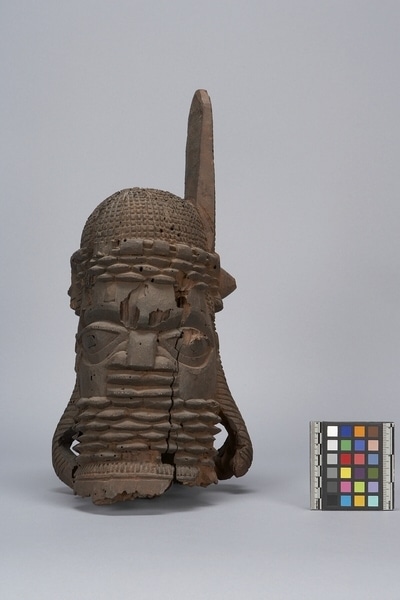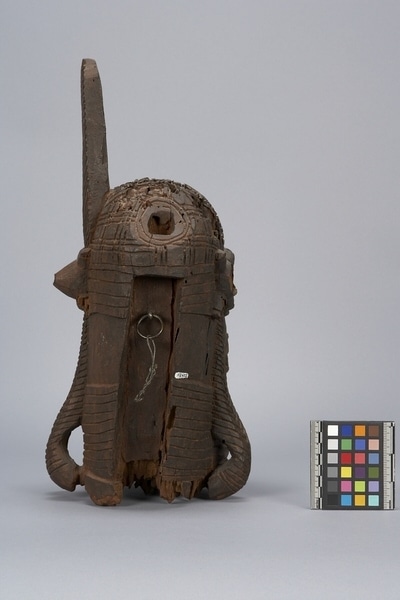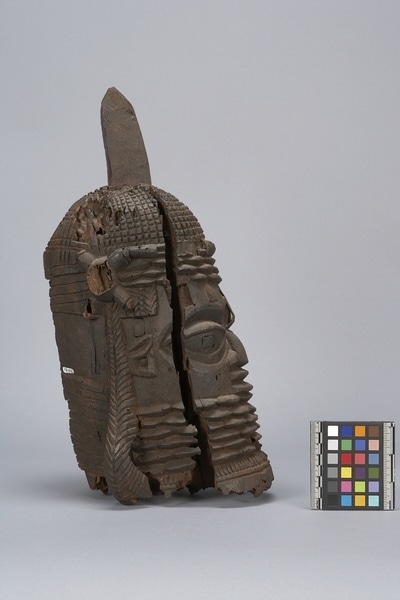Staff Item Number: K2.438 from the MOA: University of British Columbia




Description
Oba's head in bead collar and headdress; fragment of a rattle-staff. The eyes are large, the nose is fairly flat, and there is a mouth, and ears. The front of the neck and the top of the forehead, are carved with rounded petal-like protrusions. At the figure's right side, there is a single vertical braid of hair while at the figure's left side there are two vertical braids of hair. The headdress is rounded with a pattern of tiny square protrusions and it is decorated with a feather at each side.
History Of Use
An ukhure staff, also called a rattle-staff, is carved from a single piece of wood, topped by a head. Underneath the head are stacked symbols of ancestral continuity, and other symbolic elements that look similar to the ukhurhe-oho, a bamboo-like plant that grows wild near Benin City. Some ukhure staffs also depict specific deities and are used during certain festivals. These staffs are commissioned by the eldest son when the man dies, and are often placed on an altar to remember the dead. The base of the staff is hollow and has a single piece of wood inside it, so that when hit on the ground the sound produced can be used to call on ancestors. Remembrance of ancestors is a common part of Edo culture and sacrifices can be made to the spirits of deceased male ancestors. An accumulation of multiple staffs is representation of each male ancestor the family can remember.
Iconographic Meaning
The brick patterns underneath the chin and above the figure are meant to depict coral beads, which typically adorn the bodies of court officials from head to toe.
Item History
- Made in Nigeria ?
- Owned by Walter C. Koerner before 1972
- Received from Walter C. Koerner (Donor) during 1972
What
Who
- Culture
- Edo
- Previous Owner
- Walter C. Koerner
- Received from
- Walter C. Koerner (Donor)
Where
- Holding Institution
- MOA: University of British Columbia
- Made in
- Nigeria ?
When
- Ownership Date
- before 1972
- Acquisition Date
- during 1972
Other
- Item Classes
- carvings & sculpture
- Condition
- poor
- Accession Number
- 0160/0104